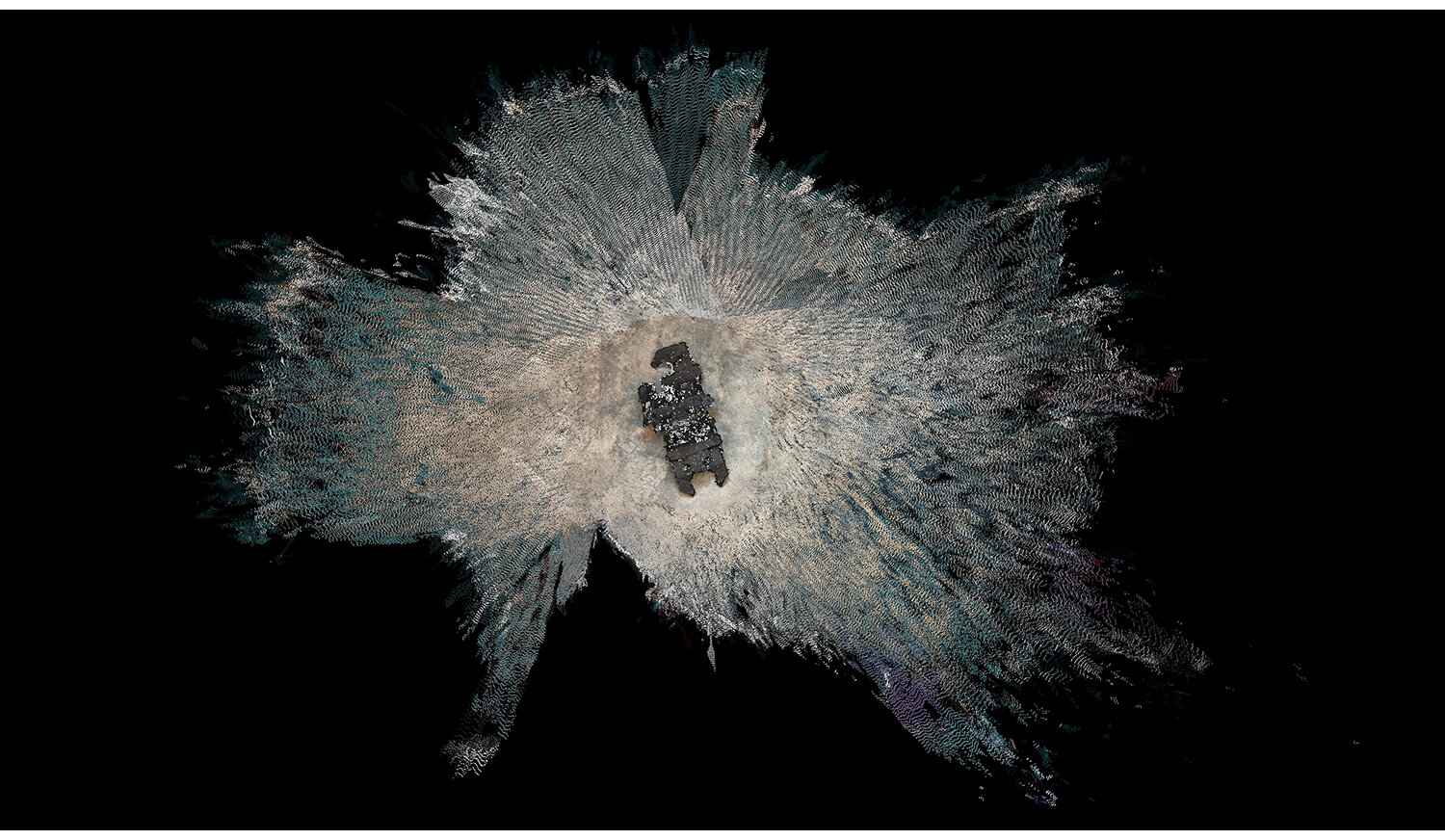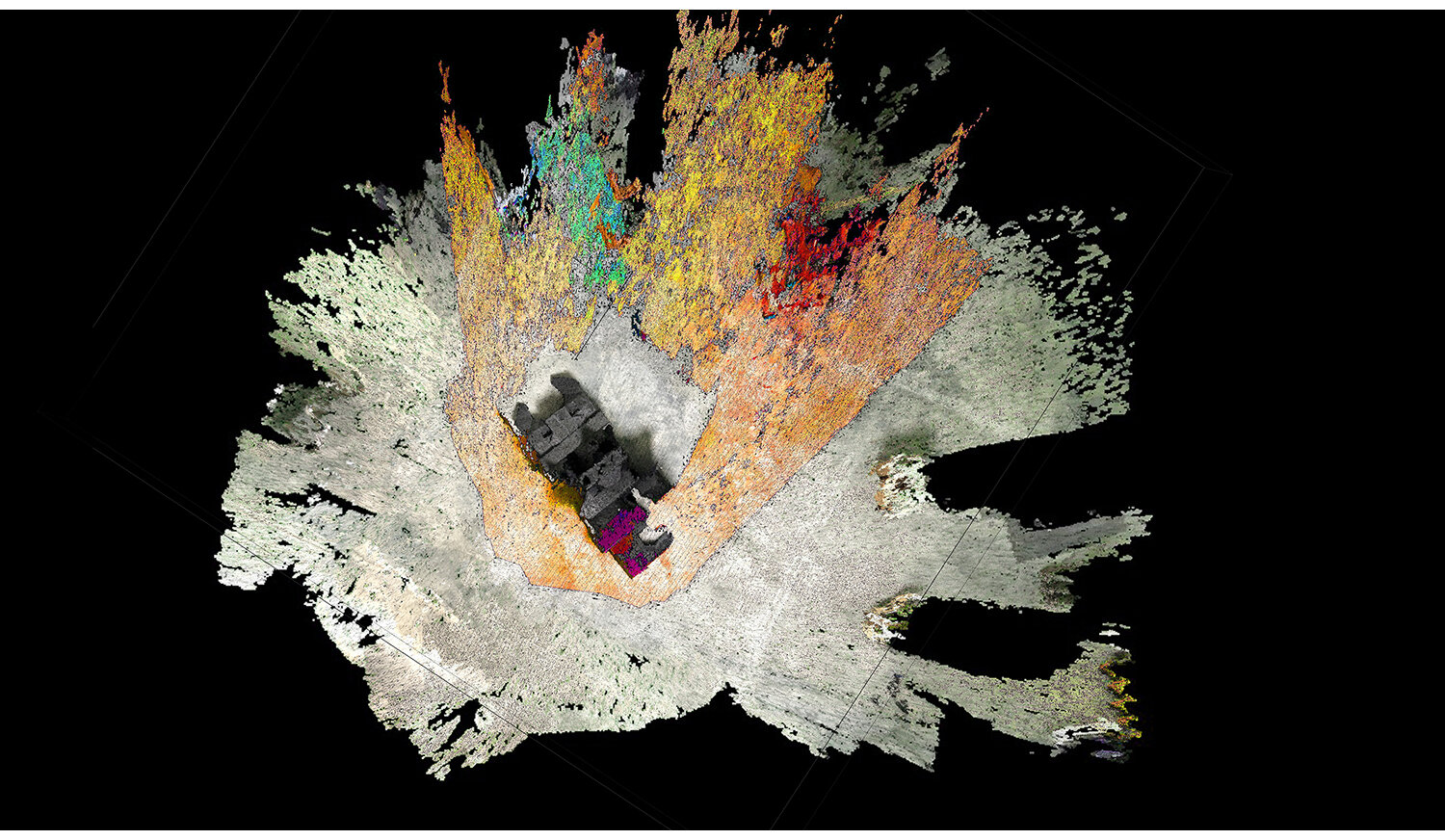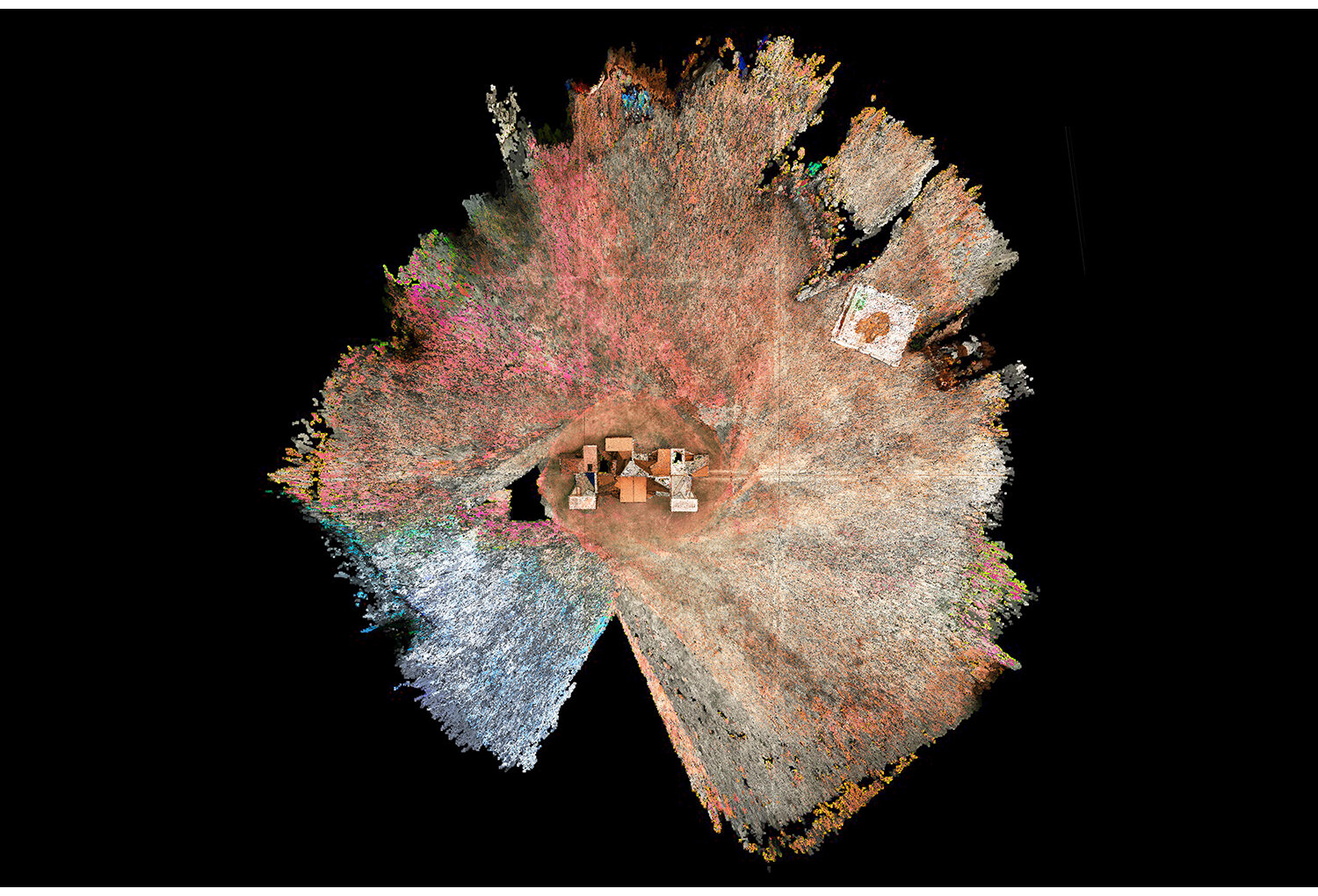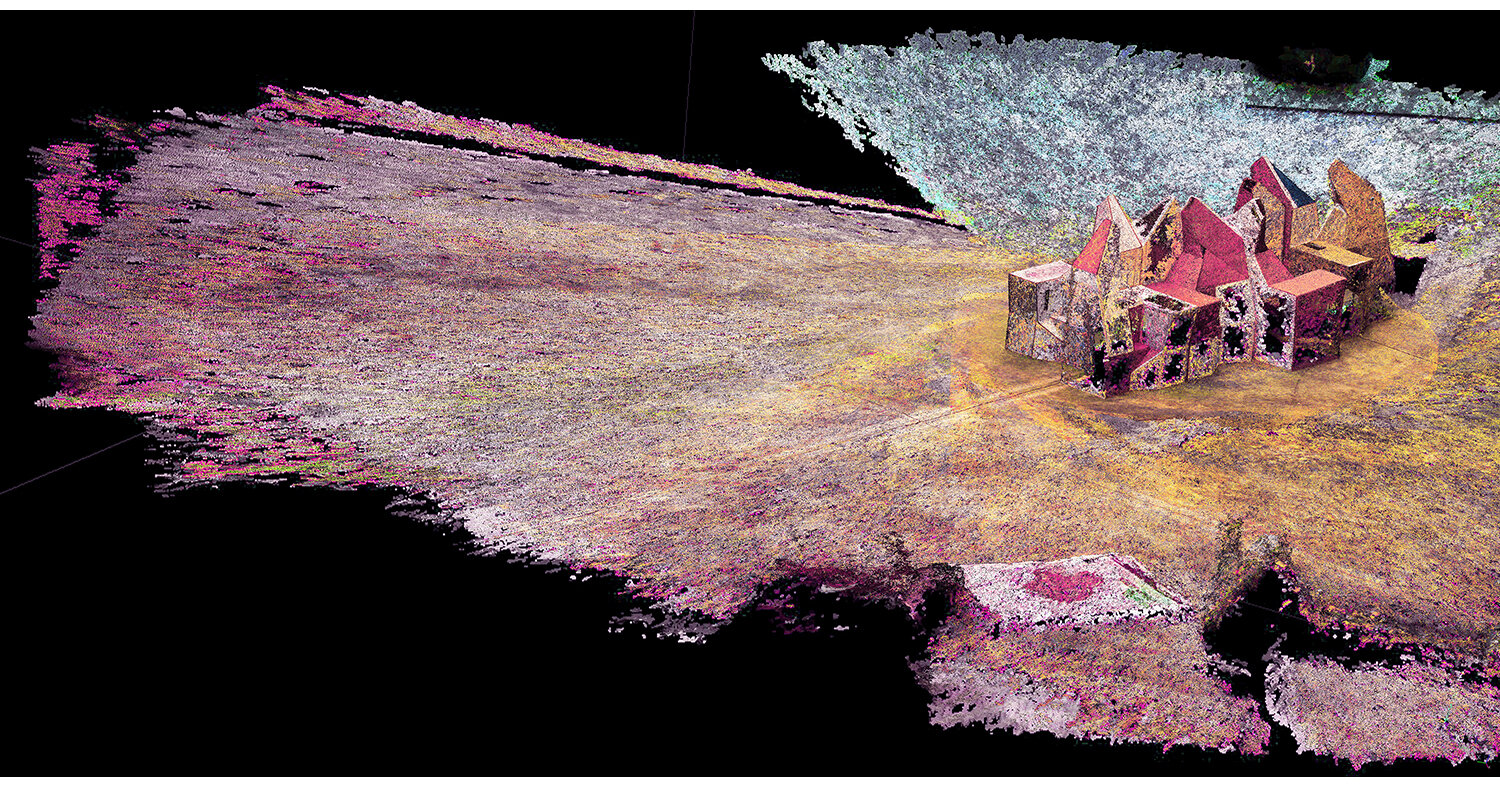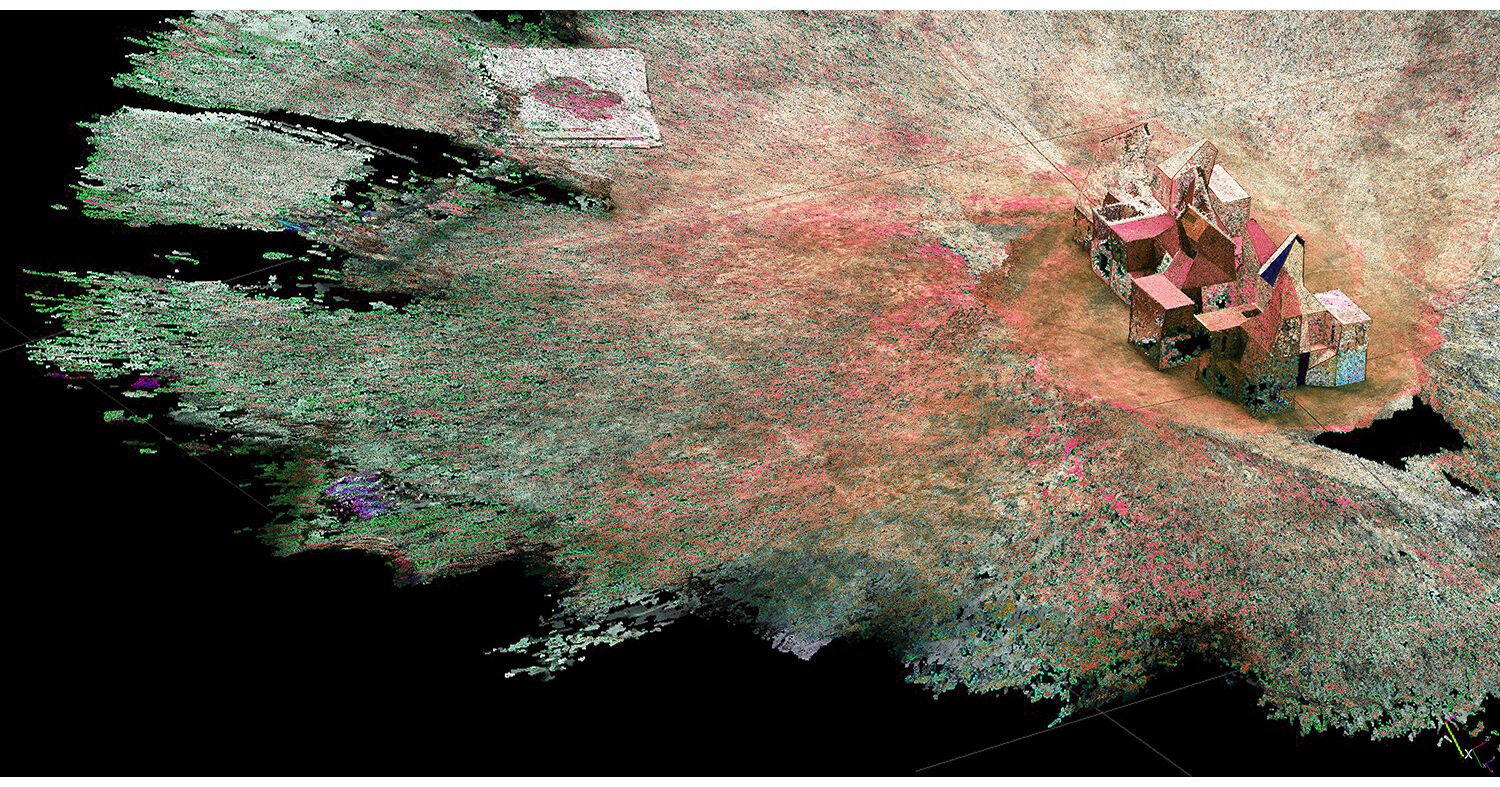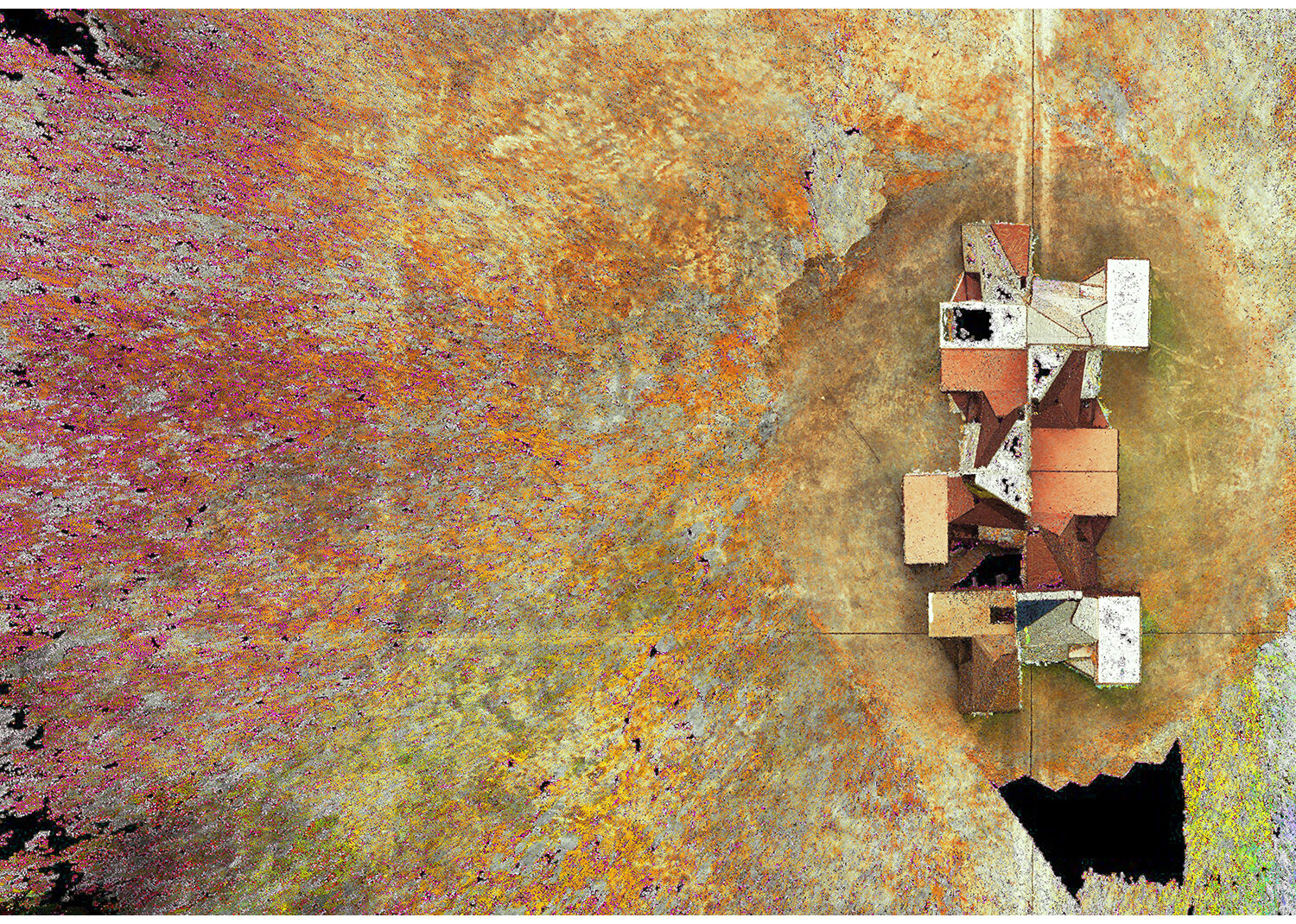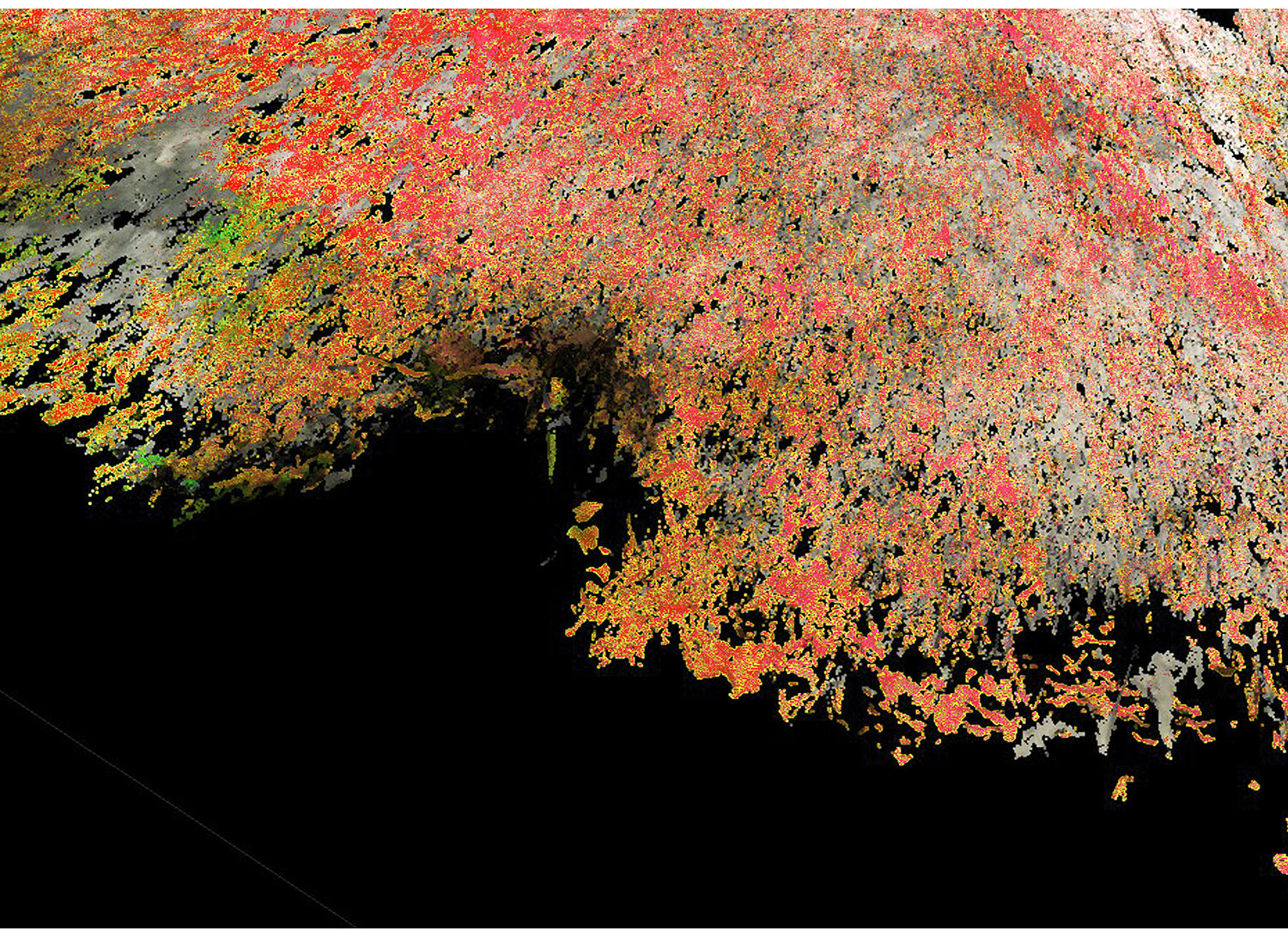SPECTRAL MONTAGES
WITH JAMES CASEBERE
2020 - 2021
The images shown here come from a series of experiments with photogrammetry software created off physical models made by the artist James Casebere. There are two primary aspects under investigation. First is the colour spectrum as captured by the digital images. These models are computed from interleaved digital photographs that have had their colour saturations increased. This allows the spatial computation to be fragmented by filtering thresholds of the energetic spectrum, or in other words, spatial points can be pulled apart and manipulated based on their colour. These models are ultimately montages of photons – albeit through millions of points in space as opposed to several fragments of cut photographs. The other interest lies in how the model represents surfaces oblique to the camera, such as the surface of the floor. Since the captured photo sets are focused on the sculptural model – which is where the greatest level of resolution is achieved – the background of the floor is captured at the fringe of every photo. These points are still computed within a range and fall off when the software can no longer accurately determine their location through the double oblique. The outcome is a frayed and scumbled edge where the reflected energetic information shreds into a blackness of 'un-computability.' These edges manifest in a manner akin to directional clusters of coloured points, elongated towards the centre of focus, they are precise anamorphic distortions of light. The image of a model made from images flickers between abstraction and realism. This fact creates a strange aesthetic effect in photogrammetry models where abstraction and realism combine in unexpected manners. Often, they look incredibly painterly.
What strikes us as interesting in this is that several of the distortions created in these models are deeply related to discussions from the history of perspective, only it is now the realm of energy, of light, that is the driver of effects, not the edges of form manifested as drawn outlines on a flat plane. Photogrammetry, for all its realism as a spatial model, is interesting precisely because the distortions this technology produces open alternate aesthetic and conceptual possibilities and provoke a revaluation of disciplinary assumptions regarding representational conventions.
© All content © Young & Ayata

